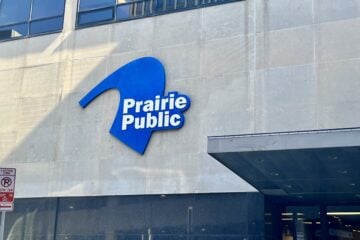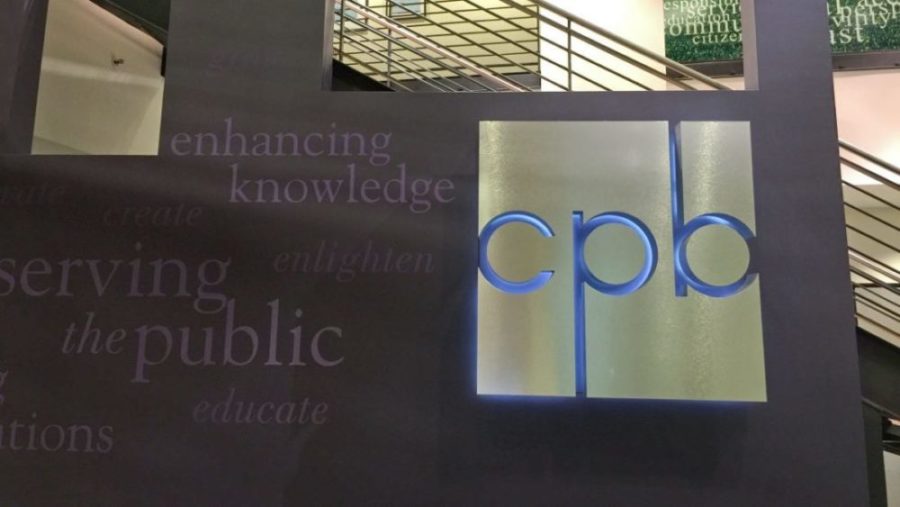Why leading digital change calls for empathy and purpose

mesh cube / iStock
I remember a moment early in my tenure in public media when our team gathered to celebrate winning a prestigious broadcasting award. It was a proud occasion, validation of our hard work by peers and industry leaders. Yet I felt a pang of inner conflict. As I admired the gleaming plaque, I wondered: Did this honor reflect true service to our community, or were we basking in recognition that mattered more inside our industry than to the public we serve? This question has stayed with me through my ongoing journey to champion a digital-first strategy at our PBS/NPR station.
Ours, like many public media organizations, has a rich legacy of quality broadcasting. Our productions have earned Michigan Emmy Awards and even titles like “Station of the Year” from our state broadcaster association. Colleagues take understandable pride in these accolades, and I respect that deeply. Those awards represent countless hours of effort and a commitment to excellence.
They have also long been a primary yardstick for success in our culture. For years, we defined our station’s value by the programs we aired and the recognition we received. However, I noticed a disconnect between collecting trophies and fulfilling our core mission to “connect our communities by using the strengths of public media to educate, inform, inspire and entertain”. If our mission is to serve everyone in our community, we cannot be satisfied with just doing great television and radio; we must meet people where they are now, which increasingly means online.
Embracing digital platforms at a traditional station has proven to be an ongoing struggle rather than a straightforward success story. Early on, I optimistically believed that a few quick wins — launching a podcast here, a web series there — would get everyone on board. Instead, each step into digital revealed deeper cultural resistance. Some colleagues viewed new digital projects as distractions from our “real” work on-air. Others feared that pushing content on social media or YouTube might dilute our brand or cannibalize our broadcast audience.
I have learned that this transformation is not just about adopting new technology or tactics; it is about changing hearts, minds and daily habits across the organization. That kind of change doesn’t happen overnight. It requires patience, persistence and a willingness to keep trying even after setbacks. To this day, we are still figuring it out. Every success uncovers new challenges, and every failure teaches us something essential for the next attempt. The work is never entirely done, and it’s the collective effort of every one of us that makes this journey meaningful and impactful.
As a leader responsible for digital strategy, I feel a profound ethical obligation to navigate this transition in a way that honors both our mission and our people. Public media’s purpose compels us to evolve. We exist not to win awards or maintain old traditions for their own sake but to serve our communities with information and content that enriches lives. In the digital age, serving the public means being accessible and relevant on the platforms people use. Ethically, I can’t justify ignoring the shifting media landscape; doing so would mean failing to meet audiences, especially younger and more diverse audiences, on their terms.
Leadership means making decisions that put the public first, even if it means challenging internal comfort zones. That has sometimes meant standing up in meetings and asking uncomfortable questions: Are we making this programming choice because it serves our community or because it’s how we’ve always done things? Would we pursue this project if no awards existed to recognize it? These questions can sound provocative, but I ask them earnestly, not as accusations. My goal is to spark reflection on whether our daily choices align with the values we proclaim.
Such conversations must be handled with care. Change can feel like an implicit critique of the past, and that’s not what I intend. Our station’s past achievements are honest and worthy of pride. The challenge is carrying that legacy of quality into new forms of content delivery. I’ve learned to approach colleagues’ concerns with empathy, understanding that their unease is not a rejection of change but a natural response to the unfamiliar.
For many veteran reporters, producers and managers, the world of streaming, podcasts and analytics dashboards can be intimidating. It’s not just about learning new tools; it’s about redefining professional identity. Suppose you’ve spent decades perfecting the craft of radio reporting or television production. In that case, it’s understandable to feel uneasy when success suddenly also depends on clickable headlines, engagement on X, or YouTube views. I acknowledge these feelings openly and believe that empathy and understanding are crucial in leading our digital transformation. We must support each other as we navigate this new landscape, respecting the past while embracing the future.
In staff discussions, I make sure to validate the value of traditional skills and past awards. We discuss how excellence in storytelling and journalistic ethics applies to any platform. The aim is not to discard what has worked well but to expand our toolkit to fulfill the station’s mission in a changing world. Your skills and past achievements are not being overlooked but instead being integrated into our digital strategy, reinforcing our commitment to quality and integrity.
One thing that has helped is drawing on the collective wisdom of the public media system. Our station is not alone in facing these cultural growing pains. Across PBS and NPR stations nationwide, there’s a recognition that we must adapt or risk irrelevance. CPB itself has invested in guiding stations through this shift, funding programs to help transform organizational culture and operations for the digital era.
Our station was selected to participate in a CPB digital transformation initiative, and that experience reinforced how pivotal culture change is. In training sessions, our team heard case studies from other stations, large and small, grappling with similar issues. The takeaway was clear: Technology and new platforms can be learned, but lasting transformation requires a mindset shift at every level. CPB’s leadership has emphasized that moving to a “digital-first, audience-centric approach” is vital for public media’s future success in a multiplatform landscape. In other words, focusing on how best to serve audiences (rather than the convenience of legacy practices) is not a luxury or fad; it’s a responsibility we have to the communities that depend on us.
Yet even with external momentum and top-down support, the real work happens person by person, day by day, within our station. I’ve come to see the ethical side of leadership in this context as twofold. First, it’s about integrity to mission: making sure that we truly prioritize the public’s needs in every strategic decision. Second, it’s about integrity with people: leading change not as a tyrant with a mandate, but as a mentor with compassion. Our decisions should always be guided by the question: How does this serve our public? This is the true north of our digital transformation.
I’ve stumbled at times by pushing too hard or not listening enough. Over time, I’ve learned the value of small wins and incremental change. For example, when a skeptical producer dipped their toe into digital by creating a short-form video series, I celebrated that effort enthusiastically. It wasn’t an overnight viral sensation, but it reached a niche online audience we hadn’t served before. More importantly, it gave that producer a personal insight into the value of digital engagement. Moments like that build trust and open minds gradually.
Writing about this journey in a publication like Current is itself an exercise in reflection and honesty. I don’t have a triumphant ending to share, at least not yet. We have not “completed” our digital transformation; truthfully, I suspect there will never be a clear finish line. What I can share is a renewed commitment to the struggle.
Every day, I remind myself and my team that the easiest path isn’t always the right one. It might be easier to keep chasing the familiar validations, to submit the same award entries, to schedule the same linear broadcasts year after year. But easy isn’t why we’re here. We’re here to serve the public in the best way we know how. Right now, that means innovating and experimenting, even if it’s hard, because our communities deserve a public media that doesn’t shy away from the future.
I hope my candid reflections resonate with fellow public media professionals. Many of us are wrestling with these questions of mission versus tradition, innovation versus preservation. Let’s not shy away from discussing them.
We owe it to ourselves and our audiences to ask tough questions and to listen generously to each other’s answers. How can we hold each other accountable to our ideals while also supporting one another through change? There are no simple answers, but by keeping our mission at the center, we can find the right balance.
In the end, ethical leadership in our digital strategy isn’t about abandoning the old or mindlessly rushing into the new; it’s about constantly aligning what we do with why we exist. In public media, “why we exist” is something truly special: to educate, inform, inspire and serve our communities, on whatever platform the people may be.
Vance Orr, MBA, is marketing and promotions manager at WGVU Public Media in West Michigan. He is an advocate for mission-driven innovation in public media.





